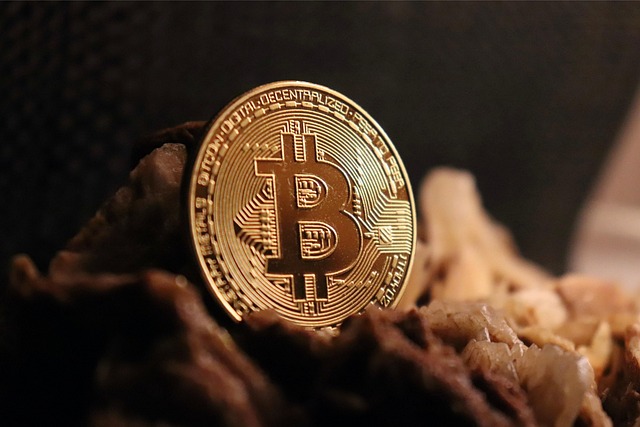3 reasons why Ethereum price keeps falling
Ether’s (ETH) most recent sell-off saw it lose the crucial $1,500 support level, and a number of technical indicators suggest that ETH may witness a deeper correction before embarking on a sustained recovery.Data shows Ether’s price dropped below its realized price — an onchain metric that recalculates the market value of a cryptocurrency based on the price at which each coin last moved on the blockchain.According to CryptoQuant contributor, theKriptolik, ETH price trading below this metric, which is historically a bearish sign. When the realized price is above the spot price, it usually acts as resistance and places “most holders suddenly in a loss position,” the analyst said.The analyst added:“Drops below the realized price often mark the capitulation phase, where investors lose confidence and begin selling en masse.”Ethereum realized price for accumulation addresses. Source: CryptoQuantIn June 2022, Ether’s realized price fell below the spot price, preceding a 51% drop in ETH price following the Terra Luna market crash. A similar scenario was witnessed in November 2022, when the metric fell below the price before Ether dropped 35% following the FTX collapse. Now that a similar scenario is playing out, the current setup loosely echoes those prior bearish continuation phases, with ETH price at risk of a deeper correction. Spot Ethereum ETF flows remain weakSpot Ethereum ETFs continue to weaken, with more than $3.3 million in net outflows on April 8. In fact, these investment products have recorded $94.1 million in outflows over the last two weeks against $13 million in inflows.The lack of investor interest is concerning, especially since institutional demand was considered a key part of Ether’s appeal and played a role in the gains accrued in May 2024 as investors bet on an ETF approval from the US Securities and Exchange Commission.Spot Ether ETF flows table. Source: Farside InvestorsThis is also reflected across all other Ether products, with the report from CoinShares pointing out that flows into Ethereum investment funds align with the bearishness seen across the market, with $37.4 million outflows recorded during the week ending April 4.ETH open interest is low, and funding rates are negativeAnother factor weighing Ether’s price down is the lack of enthusiasm in its derivatives market, evidenced by low open interest and negative funding rates. Open interest (OI)—the total number of outstanding futures and options contracts—remains low, indicating reduced trader participation and speculative activity. Currently, at $16.7 billion, the metric is 48% below its peak of $32.3 billion witnessed on Jan. 24.Declining OI signals waning investor confidence or interest, which can exacerbate the price decline as buying pressure dries up.ETH open interest across all exchanges. Source: CoinGlassCompounding this issue are negative funding rates in Ether’s perpetual futures markets, which are hovering below 0%, indicating that bearish sentiment dominates the market.Related: Ethereum whale sells ETH after 900 days, missing $27M possible peak profitWhen rates turn negative, it means shorts (bets against the price) are paying longs to keep their positions open, suggesting a dominance of bearish sentiment. ETH funding rates across all exchanges. Source: GlassnodeCompeting layer-1 blockchains outpace Ethereum network activityEthereum’s high gas fees offer an opportunity for competing layer-1 blockchains focusing on high scalability to eat into its market share in the space. While a fraction of the activity has moved to Ethereum layer-2 solutions, some users and developers opt for other top layer-1 alternatives such as the BNB Chain, Solana, Avalanche and Tron.As a result, Ethereum’s network activity growth has fallen behind that of its rivals. Top blockchains ranked by 24-hour DApps volume, USD. Source: DappRadarEthereum’s unique active wallets (UAW) — addresses engaging with decentralized applications (DApps) on the platform — declined by over 33% over the last 30 days compared to just a 16% decrease on Solana and a 16% increase on Tron.Similarly, the total number of transactions deployed on the Ethereum network dropped by 40.5% during the same period, while transactions on the BNB Chain, Solana and Avalanche decreased by 16%, 30% and 23%, respectively. Transactions on Tron and Fantom increased by 23% and 16%.There’s no indication that the factors weighing on Ether’s price — such as declining network activity and low demand for its spot ETF products — will reverse anytime soon. While this doesn’t guarantee that Ether’s price will remain in an extended downtrend, the technical setup suggests that ETH’s price may bottom at $1,000.This article does not contain investment advice or recommendations. Every investment and trading move involves risk, and readers should conduct their own research when making a decision.
Bitcoin $100K target ‘back on table’ after Trump tariff pause supercharges market sentiment
Bitcoin (BTC) staged a sharp rebound after US President Donald Trump announced a pause on tariffs for non-retaliating countries, reigniting bullish momentum and raising hopes for a potential surge toward the $100,000 mark.On April 9, BTC/USD surged by approximately 9%, reversing most of the losses it incurred earlier in the week, to retest $83,000. In doing so, the pair came closer to validating a falling wedge pattern that has been forming on its daily chart since December 2024. A falling wedge pattern forms when the price trends lower inside a range defined by two converging, descending trendlines. In a perfect scenario, the setup resolves when the price breaks decisively above the upper trendline and rises by as much as the maximum distance between the upper and lower trendlines.BTC/USD daily price chart ft. falling wedge breakout setup. Source: TradingViewAs of April 9, Bitcoin’s price was confined within the falling wedge range while eyeing a breakout above its upper trendline at around $83,000. If it is confirmed, BTC’s main upside target by June could be around $100,000.Conversely, a rejection from the upper trendline could raise the likelihood of Bitcoin retreating deeper within the wedge pattern, potentially sliding toward the apex near $71,100.Source: Merlijn The TraderIf a breakout occurs after testing the $71,100 level, the most conservative upside target for BTC could still be as high as $91,500.Onchain data supports $100,000 Bitcoin outlookBitcoin’s rebound appears just before testing a critical onchain support zone between $65,000 and $71,000, reinforcing the cryptocurrency’s bullish outlook toward the 100,000 mark. Notably, the $65,000-71,000 range is based on two important Bitcoin metrics—active realized price ($71,000) and the true market mean ($65,000). Bitcoin short-term onchain cost basis bands. Source: GlassnodeThese metrics estimate the average price at which current, active investors bought their Bitcoin. They filter out coins that haven’t moved in a long time or are likely lost, giving a relatively accurate picture of the cost basis for those still participating in the market.In the past, Bitcoin has spent about half the time trading above this price range and half below, making it a good indicator of whether the market is feeling positive or negative, according to Glassnode analysts. “We now have confluence across several onchain price models, highlighting the $65k to $71k price range as a critical area of interest for the bulls to establish long-term support,” they wrote in a recent weekly analysis, adding: “Should price trade meaningfully below this range, a super-majority of active investors would be underwater on their holdings, with likely negative impacts on aggregate sentiment to follow.”Related: Bitcoin has ‘fully decoupled’ despite tariff turmoil, says Adam BackBitcoin’s worst-case scenario is a decline toward $50,000Breaking below the $65,000-71,000 range could worsen Bitcoin’s probability of retesting $100,000 anytime soon. Such declines would also lead to the price breaking below its 50-week exponential moving average (50-week EMA; the red wave).BTC/USD weekly price chart. Source: TradingViewThe 50-week EMA—near $77,760 as of April 9—has historically acted as a dynamic support during bull markets and a resistance during bear markets, making it a crucial trend-defining level. Losing this support could open the door for a steeper pullback toward the 200-week EMA (the blue wave) at around $50,000. Previous breakdowns below the 50-week EMA have resulted in similar declines, namely during the 2021-2022 and 2019-2020 bear cycles.A rebound, on the other hand, raises the likelihood of a $100,000 retest.This article does not contain investment advice or recommendations. Every investment and trading move involves risk, and readers should conduct their own research when making a decision.
US Dollar Index (DXY) falls close to level that was followed by 500%+ Bitcoin price rallies
The Dollar Index (DXY) dipping below 100 has historically aligned with Bitcoin (BTC) bull runs, delivering gains of over 500% during the last two instances. Now, as trade tensions escalate and US Treasurys face sell-offs, some analysts believe China may be actively working to weaken the US dollar. This added pressure on the dollar heightens the likelihood that it could once again serve as a catalyst for another major Bitcoin rally. Is China working to weaken the US dollar?According to an April 9 Reuters report, China’s central bank has instructed state-owned lenders to “reduce dollar purchases” as the yuan faces significant downward pressure. Large banks were reportedly “told to step up checks when executing dollar purchase orders for their clients,” signaling an effort to “curb speculative trades.”Some analysts have speculated whether China might be attempting to weaken the dollar in response to recent US import tariff increases. However, Jim Bianco, president of Bianco Research, holds a different view.Source: X/Jim BiancoBianco doubts that China is selling US Treasurys with the intent of harming the US economy. He points out that the DXY has remained steady around the 102 level. While China could sell bonds without converting the proceeds into other currencies—thereby impacting the bond market without destabilizing the dollar—this approach seems counterproductive. According to Bianco, it is unlikely that China is a significant seller of Treasurys, if it is selling them at all.US Dollar Index (DXY). Source: TradingView / CointelegraphThe DXY Index remains close to the 104 level seen on March 9 and has consistently stayed within the 100-110 range since November 2022. Therefore, claims that its current level reflects widespread distrust in the US dollar or signals an imminent collapse seem unfounded. In reality, stock market performance is not an accurate measure of investors’ risk perception regarding the economy. DXY below 100 is usually followed by Bitcoin bull runsThe last time the DXY Index fell below 100 was in June 2020, a period that coincided with a Bitcoin bull run. During those nine months, Bitcoin surged from $9,450 to $57,490. Similarly, when DXY dropped below 100 in mid-April 2017, Bitcoin’s price skyrocketed from $1,200 to $17,610 within eight months. Whether coincidental or not, the 100 level has historically aligned with significant Bitcoin price gains.A weakening DXY indicates that the US dollar has lost value against a basket of major currencies such as the euro, Swiss franc, British pound, and Japanese yen. This decline impacts US-based companies by reducing the amount of dollars they earn from foreign revenues, which in turn lowers tax contributions to the US government. This issue is particularly critical given that the US is running an annual deficit exceeding $1.8 trillion.Similarly, US imports for individuals and businesses become more expensive in dollar terms when the currency weakens, even if prices remain unchanged in foreign currencies. Despite being the world’s largest economy, the US imports $160 billion in oil, $215 billion in passenger vehicles, and $255 billion in computers, smartphones, data servers, and similar products annually.Related: China’s tariff response may mean more capital flight to crypto: HayesA weaker US dollar has a dual negative impact on the economy. It tends to slow consumption as imports become more expensive, and it simultaneously reduces tax revenues from the international earnings of US-based companies. For example, more than 49% of revenues for major corporations like Microsoft, Apple, Tesla, Visa, and Meta come from outside the US. Similarly, companies such as Google and Nvidia derive an estimated 35% or more of their revenues internationally.Bitcoin’s price could potentially reclaim the $82,000 level regardless of movements in the DXY Index. This could happen as investors grow concerned about potential liquidity injections from the US Federal Reserve to stave off an economic recession. However, if the DXY Index falls below 100, investors may find stronger incentives to turn to alternative hedge instruments like Bitcoin.This article is for general information purposes and is not intended to be and should not be taken as legal or investment advice. The views, thoughts, and opinions expressed here are the author’s alone and do not necessarily reflect or represent the views and opinions of Cointelegraph.
Bitcoin has 'fully decoupled' despite tariff turmoil, says Adam Back
As markets reel from geopolitical tensions and economic uncertainty, Bitcoin has shown relative resilience during events like Trump’s recent tariff bombshells, according to Blockstream CEO Adam Back.While in the short term, Bitcoin (BTC) may move in tandem with stocks and other risk-on assets, Back sees the long-term trend telling a different story.“Bitcoin is fully decoupled because it’s gone up five or six times since the bottom of the market three years ago,” he said during an exclusive interview with Cointelegraph at Paris Blockchain Week.Back, who is one of the original cypherpunks and a key contributor to Bitcoin’s early development, predicts strong adoption tailwinds for BTC: regulatory clarity, institutional interest, and the legitimizing force of exchange-traded funds (ETFs). He notes that while most long-term holders are already “all in” and unable to buy dips, entities like BlackRock and sovereign wealth funds are stepping in, quietly absorbing supply.The Blockstream CEO also touches on the geopolitical dimension, discussing a scenario in which governments may begin actively acquiring Bitcoin. “If the US government doesn’t go on a buying spree and buy 1 million Bitcoin over the next five years, that gives more time for the new entrants who’ve got access finally through brokers and through the ETFs to build up the Bitcoin position.”Despite short-term volatility, Back remains firmly bullish on the mid-term outlook: “Typically, there would be half a dozen 30% drops in a bull market, so I think that’s probably where we are now.”Watch the full interview now on the Cointelegraph’s YouTube channel — and subscribe for more exclusive conversations with the biggest names in crypto.
New York bill proposes blockchain study for election record security
Blockchain may soon earn itself a role in New York State’s voting processes and procedures.New York Assemblymember Clyde Vanel introduced Bill A07716 on April 8, directing the state Board of Elections to evaluate how blockchain could help protect voter records and election results. The legislation is currently under consideration by the Assembly Election Law Committee.According to the bill’s summary, the goal is to “study and evaluate the use of blockchain technology to protect voter records and election results.“The bill mandates that the Board of Elections produce a report within one year assessing the potential benefits of blockchain in securing election data. The study must include input from experts in blockchain, cybersecurity, voter fraud and election recordkeeping.Bill text. Source: New York State AssemblyRelated: Ripple announces money transmitter licenses in Texas and New YorkBlockchain applications in electionsThis is not the first initiative that attempts to bring the tamper-proof features of blockchain technology to the voting process. In early March, the Bitcoin network was used to secure and store the results of the Williamson County, Tennessee Republican Party Convention’s March 4 election to determine the leadership and board of the local party chapter.About a year ago, Brian Rose — an independent mayoral candidate in London — told Cointelegraph that blockchain-based voting systems could foster more transparency and public trust in the election process:“Wouldn’t we all sleep better at night if the voting system was on the blockchain and you could really prove that identity and you could actually prove that vote and there would be an immutable record? This is the future and I think it takes someone like me who comes from a business background who’s intimately involved in the blockchain.”Still, experts caution that blockchain systems are only as reliable as the data input into them — a concept often summarized as “garbage in, garbage out.” While blockchain offers tamper-resistant storage, it does not guarantee the integrity of the original data submission.Related: Election tally: Does blockchain beat the ballot box?A crypto-conscious assemblymemberVanel is no stranger to blockchain-related initiatives, having introduced a bill that would establish criminal penalties to prevent cryptocurrency fraud and protect investors from rug pulls in early March. In January, he also stated that New York became the first US state to create a cryptocurrency task force to study the regulation, use and definition of digital currency.He has also been a vocal commenter on the industry and its relationship with policymakers for years. In May 2019, Vanel said that the blockchain industry needs to be better at lobbying for itself and educating regulators.Magazine: 3 reasons Ethereum could turn a corner: Kain Warwick, X Hall of Flame
Thailand targets foreign crypto P2P services in new anti-crime laws
Thailand is beefing up measures to combat online crimes involving digital assets by passing new amendments to several national laws.Thailand’s cabinet on April 8 passed a resolution approving amendments to emergency decrees on digital asset businesses and on measures for cybercrime prevention, the Thai Securities and Exchange Commission (SEC) announced.As part of the new laws, Thai regulators aim to strengthen measures for combating digital asset mule accounts in banks, restrict foreign cryptocurrency peer-to-peer (P2P) platforms and introduce strict financial penalties of as much as $8,700 and imprisonment of up to three years.The new laws are expected to be enforced in the near future, and will take effect after being published in the Royal Thai Government Gazette, the announcement stated.Key measures to combat mule accounts and money launderingThe new regulations include stringent measures for crypto asset service providers (CASPs), requiring them to collect and report information on transactions linked to online scams and suspend them.The amendments also empower Thai authorities to block foreign CASPs from providing services to local users, further tightening controls against money laundering activities.Related: Zhao pledges BNB for Thailand, Myanmar disaster reliefThe new laws also have significant implications for non-crypto businesses in Thailand, imposing additional joint responsibilities on commercial banks, telecom providers and social media service providers. The SEC stated:“Requiring commercial banks, telephone and telecommunications network providers, social media service providers and digital asset business operators to take joint responsibilities for damages caused by cybercrimes if they fail to comply with the standards or measures for preventing cybercrimes as specified by regulatory authorities.”Restrictions for foreign crypto P2P services The new laws explicitly aim to “deter and prevent” foreign crypto P2P service providers, which are “qualified as digital asset exchanges under the Digital Asset Business Law,” according to the SEC.Additionally, the laws intended to restrict other types of foreign CASPs from providing services to investors in Thailand, the announcement said.Source: ChartNerdThailand’s latest regulatory developments apparently aim to restrict crypto P2P transactions to only local P2P providers in an effort to avoid additional risks potentially stemming from foreign CASPs.Cointelegraph approached the Thai SEC and crypto exchange Binance for comments regarding the restrictions but did not receive a response by the time of publication.Meanwhile, local regulators have expressed interest in growing cryptocurrency adoption by approving crypto payment trials in certain cities like Phuket and considering approvals of crypto exchange-traded funds.Magazine: New ‘MemeStrategy’ Bitcoin firm by 9GAG, jailed CEO’s $3.5M bonus: Asia Express
RedStone targets trading latency with new oracle on MegaETH
RedStone, a blockchain oracle provider, has introduced a push-based oracle on MegaETH to tackle latency issues that challenge the efficiency of onchain trading.According to a spokesperson for RedStone, the new oracle can push new prices onchain every 2.4 milliseconds. Initially debuting on MegaETH, an Ethereum layer-2 network, the product may be rolled out to additional chains in the future.RedStone said its oracle sources prices from centralized exchanges and delivers them directly to applications or smart contracts via nodes that operate natively on the MegaETH chain.This “co-location” strategy minimizes latency by eliminating delays typically caused by the physical distance between servers. In the future, RedStone also plans to include price feeds from decentralized exchanges.Oracles compatible with the Ethereum Virtual Machine (EVM) are becoming more popular. According to Alchemy, there are currently 12 decentralized oracle networks operating on Ethereum.Oracles can make money through data usage fees, licenses, staking rewards and node incentives. The current market capitalization for oracle tokens sits at $10.2 billion, according to CoinMarketCap.Related: Trump’s World Liberty Financial taps Chainlink as oracle providerDeFi growth spurs further rise of oraclesDecentralized finance’s total value locked onchain nears $88 billion as of April 8, after rising 116% in 2024, according to DefiLlama. Ethereum remains the top blockchain for DeFi applications, with $47.8 billion locked in the network, followed by Solana with $6.1 billion in DeFi TVL.DeFi TVL over time. Source: DefiLlamaThe rise of DeFi has intensified competition in the oracle market — an essential component for the functioning of decentralized applications. Price oracles feed real-time market data into smart contracts, acting as a bridge between blockchains and the real world.Popular players in the oracle space include Chainlink and Pyth Network. In October 2024, Pyth flipped Chainlink in 30-day volume, reaching $36 billion in transactions. The protocol offers a pull-based model that provides data upon request, thus making it optimized for high-volume activities. Magazine: Financial nihilism in crypto is over — It’s time to dream big again
Gaming NFT maker Aavegotchi votes to ditch Polygon for Base
Aavegotchi, a non-fungible token (NFT) protocol focused on Web3 gaming, has opted to abandon blockchain network Polygon and “go all-in” on Base, an Ethereum layer-2 scaling chain, according to the results of an onchain vote. On April 8, Aavegotchi’s community members voted 93.5% in favor of a proposal to “Make Aavegotchi Based Again” by deprecating the protocol’s smart contracts on Polygon and re-deploying on Base, according to Aavegochti’s governance page. “Given our close relationship with the Base team, as well as recent developments in the Base ecosystem […] we believe the most +EV move for Aavegotchi (for this cycle, at least) is to sunset [its Polygon deployment] and go all-in on Base,” Aavegotchi founder Dan said in a February X post proposing the shift.The migration reflects Aavegotchi’s efforts to adapt to 2025’s cryptocurrency market downturn, which was worsened last week by President Donald Trump’s plan to impose sweeping tariffs on most US imports. Aavegotchi’s developer, Pixelcraft Studios, has “recently made significant team cuts to reduce our burn and extend runway,” Dan said. Memecoins and NFTs have been among Web3’s hardest-hit segments so far this year.Aavegotchi’s community voted overwhelmingly for the move. Source: AavegotchiRelated: Crypto stocks down, IPOs punted amid tariff tumultPolygon’s flat TVLAavegotchi’s decision also highlights Polygon’s ongoing challenges in maintaining users and total value locked (TVL) in the face of competition from Ethereum layer-2 chains, such as Arbitrum and Base. Polygon’s TVL has declined from highs of nearly $10 billion in 2021 to approximately $725 million as of April 8, according to data from DeFILlama. Both Base and Arbitrum each hold more than $2 billion in TVL, DefiLlama data shows. TVL is a key metric used in DeFi (decentralized finance) to measure the total amount of assets deposited in a protocol. It not only reflects user trust and adoption but also serves as an indicator of available liquidity.According to Dan, Polygon hasn’t delivered any major updates or features for gaming protocols. “Polygon has not shipped any significant updates or features to PoS to enable better ecosystem coherence or discovery for gaming.” Polygon’s growth has been relatively flat in recent years. Source: Coder DanMeanwhile, “both Base and Arbitrum stand out as being both performant and ‘lindy’ – able to stand the test of time,” Dan said, adding he prefers Base because of the chain’s “stronger retail onboarding.”Base is an optimistic rollup launched in 2023 by Coinbase, the US’s largest cryptocurrency exchange. Aavegotchi was created in a collaboration between Pixelcraft Studios and Aave, a decentralized lending protocol. It describes its NFTs as “digital collectibles” that can be “customized with various wearables, such as hats, glasses, and other accessories [and]can be bought, sold, and traded as NFTs,” according to its website. Magazine: XRP win leaves Ripple and industry with no crypto legal precedent set
Bitcoin relief rally fizzles as White House confirms 104% China tariffs — Will BTC fall to new lows?
Bitcoin’s surprise rebound to $81,180 — which was influenced by fake news regarding a pause on US tariffs — has all but evaporated following White House confirmation that 104% tariffs on China will start on April 9.S&P 500 drops intra-day gains follow White House tariff confirmation. Source: X / Kobeissi LetterAfter dropping below the $75,000 level for the first time since Nov. 6, 2024, BTC retested a key demand zone that traders hope will provide a safe haven for the bulls.The safe haven is a fair value gap located between $77,000 and $73,400, and this zone was created during the November 2024 Trump pump.BTC/USD daily chart. Source: Cointelegraph/TradingViewMN Capital founder Michael van de Poppe had earlier asserted that Bitcoin needed to retest this zone “before going back upward.”“Bitcoin attacking $80,000 is a strong sign,” said van de Poppe in another X post on April 8, adding:“I don’t know whether we’ll be having another drop or whether we’ve seen it all.”BTC/USD daily chart. Source: Michael van de PoppeFellow analyst Jelle shared similar sentiments, saying that Bitcoin’s close above $79,000 on April 7 after dropping as low as $74,400 was impressive compared to how equities performed.“Waiting for the dust to settle – expecting the price to move higher once that happens.”Related: Bitcoin may rival gold as inflation hedge over next decade — Adam BackBitcoin’s long-term holders’ activity spells doom for BTC priceData from onchain analytics platform CryptoQuant now shows that the long-term holders (LTHs) — individuals and entities who have held Bitcoin for more than 155 days — could be preparing to sell their coins, particularly after the latest crash.The Exchange Inflow Coin Days Destroyed (CDD) metric measures the volume of Bitcoin moved to exchanges, weighted by how long those coins were held dormant, indicating potential selling pressure from long-term holders.There was a massive spike in this metric on April 7, signaling that the old coins are waking up, which is historically a bearish sign. A chart posted by a CryptoQuant contributor, IT Tech, in one of its “Quicktake” blog posts showed that when the metric spiked on April 2, Bitcoin price dropped from $88,000 to $81,000.A similar spike was seen on March 27, preceding a 7% drop in price over two days.Spotting a similar spike on April 7, the analyst wondered if Bitcoin’s long-term holders were “preparing to sell again?”Bitcoin: Exchange Inflow CDD. Source: CryptoQuantIf history repeats itself, Bitcoin’s sell-off could continue for a few more days, with the March 2024 all-time high near $74,000 presenting the first line of defense.This article does not contain investment advice or recommendations. Every investment and trading move involves risk, and readers should conduct their own research when making a decision.
Dubai gov’t agencies to link real estate registry with property tokenization
Dubai’s real estate and crypto regulatory authorities have signed a new agreement aimed at expanding digital asset adoption in the real estate sector.On April 6, the Dubai Land Department (DLD) announced an agreement with the Virtual Assets Regulatory Authority (VARA). According to the announcement, the agreement will link Dubai’s real estate registry with property tokenization through a governance system. The agreement aims to improve digital infrastructure and attract global investment by enhancing market liquidity and property management efficiency. It also aims to support Dubai’s broader economic strategy, which includes a goal of doubling the city’s gross domestic product over the next decade.Related: Mantra and Damac sign $1B deal to tokenize Middle Eastern assetsNew real estate model opens up Dubai’s market to global investorsThe new development follows the DLD’s recent project pilot to convert real estate assets into blockchain-based digital tokens. On March 20, the DLD announced the pilot phase of its real-estate tokenization project. The tokenization launch made DLD the first real-estate registration entity in the United Arab Emirates to tokenize property title deeds. The DLD expects the initiative to drive growth in real estate investment, aiming to reach a value of over $16 billion by 2033. Scott Thiel, the co-founder and CEO of real-word asset (RWA) tokenization platform Tokinvest, told Cointelegraph that the new development shows a clear message from the UAE government: “In just three weeks, Dubai has gone from pilot launch to strategic execution and the message is loud and clear: the future of real estate investment is onchain.”Thiel also said that the two agencies working hand in hand will create a smarter model that opens Dubai’s real estate market to a global pool of investors. “This isn’t just another MOU. It’s the playbook for Real Estate 2.0,” Thiel told Cointelegraph. The executive urged investors across the globe to observe what the UAE is doing in terms of tokenization. Thiel said this is “what the future of real estate looks like.”Magazine: Crypto fans are obsessed with longevity and biohacking: Here’s why










